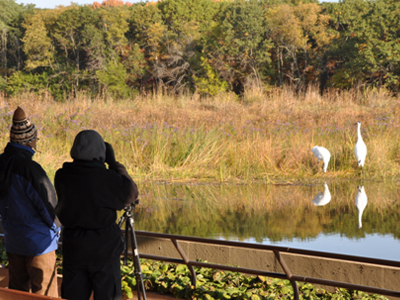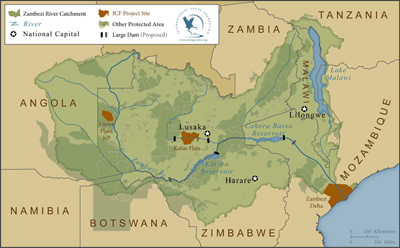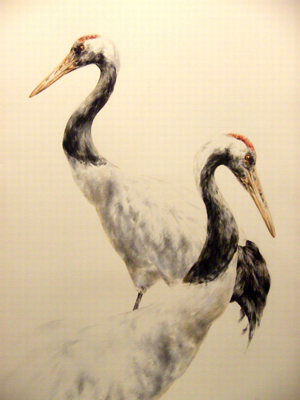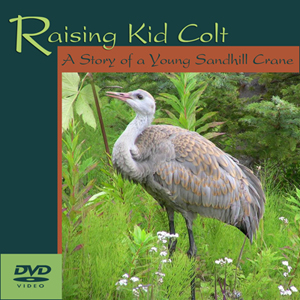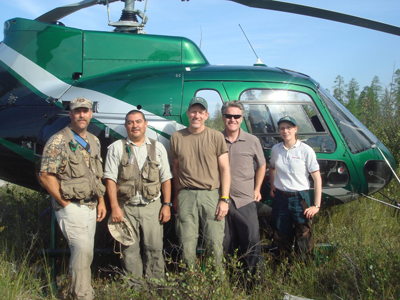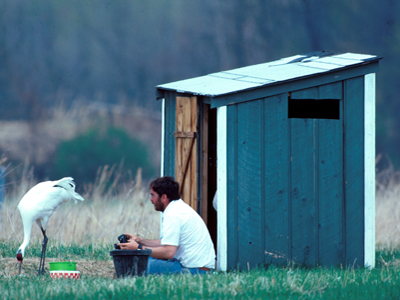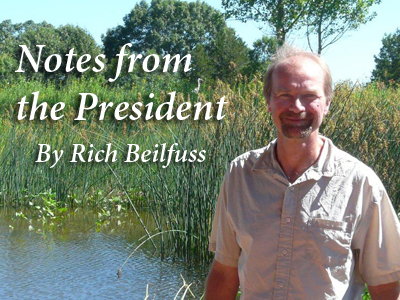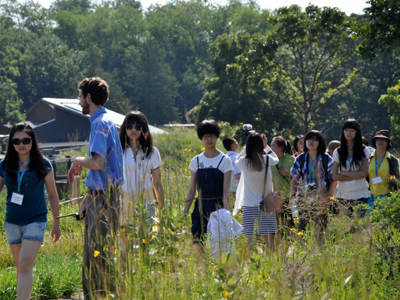 As the seasons change, so do the patterns and behaviors of our captive flock. Things have been busy this fall within the Whooping Crane enclosure at ICF. We recently hosted Ph.D. student Megan Fitzpatrick, who spent a week here in Baraboo watching our Whooping Cranes, Omega and Seurat, and studying their behavior in a wetland environment.
As the seasons change, so do the patterns and behaviors of our captive flock. Things have been busy this fall within the Whooping Crane enclosure at ICF. We recently hosted Ph.D. student Megan Fitzpatrick, who spent a week here in Baraboo watching our Whooping Cranes, Omega and Seurat, and studying their behavior in a wetland environment.
Results for "Headlines Videos cleantalkorg2.ru Share Market breaking newstoday Read Breaking News Today World News breaking news english search world news"
Whooping Cranes Depart on Ultralight-guided Flight to Florida
![]() Six young Whooping Cranes began their ultralight-led migration September 28th from the White River Marsh State Wildlife Area in Green Lake County, Wis. This is the 12th group of birds to take part in a project led by the Whooping Crane Eastern Partnership (WCEP), an international coalition of public and private groups that is reintroducing this highly imperiled species in eastern North America, part of its historic range.
Six young Whooping Cranes began their ultralight-led migration September 28th from the White River Marsh State Wildlife Area in Green Lake County, Wis. This is the 12th group of birds to take part in a project led by the Whooping Crane Eastern Partnership (WCEP), an international coalition of public and private groups that is reintroducing this highly imperiled species in eastern North America, part of its historic range.
Dam-Dependent Zambezi Basin Unprepared for Climate Change
 An in-depth study warns that new and proposed dams on Southern Africa’s largest river are ill-prepared to withstand the shocks of a changing climate. The result could be uneconomic dams that under-perform in the face of more extreme drought, and more dangerous dams that have not been designed to handle increasingly damaging floods.
An in-depth study warns that new and proposed dams on Southern Africa’s largest river are ill-prepared to withstand the shocks of a changing climate. The result could be uneconomic dams that under-perform in the face of more extreme drought, and more dangerous dams that have not been designed to handle increasingly damaging floods.
Ace and Haiku Visit Wausau, WI
 Each year the Leigh Yawkey Woodson Art Museum in Wausau, Wisconsin hosts Birds in Art, an international exhibition of the world’s finest contemporary avian art. This year, ICF’s Red-crowned Cranes, Ace and Haiku, will be a part of the exhibit.
Each year the Leigh Yawkey Woodson Art Museum in Wausau, Wisconsin hosts Birds in Art, an international exhibition of the world’s finest contemporary avian art. This year, ICF’s Red-crowned Cranes, Ace and Haiku, will be a part of the exhibit.
Raising Kid Colt – A Story of a Young Sandhill Crane
 A perfect balance of entertainment and education, Raising Kid Colt – A Story of a Young Sandhill Crane, invites you into the exciting world of a wild Sandhill Crane couple and their parenthood adventures. The incredible footage and documentation of these cranes was captured by amateur videographer, Nina Faust, who happily shares her land in Homer, Alaska with a Sandhill Crane family.
A perfect balance of entertainment and education, Raising Kid Colt – A Story of a Young Sandhill Crane, invites you into the exciting world of a wild Sandhill Crane couple and their parenthood adventures. The incredible footage and documentation of these cranes was captured by amateur videographer, Nina Faust, who happily shares her land in Homer, Alaska with a Sandhill Crane family.
Whooping Cranes Transferred to Horicon NWR
![]() Six Whooping Crane chicks arrived last week at Horicon National Wildlife Refuge in Dodge County, Wis. The cranes are part of the Direct Autumn Release project conducted by the Whooping Crane Eastern Partnership, an international coalition of public and private organizations that is reintroducing this highly imperiled species in eastern North America, part of its historic range.
Six Whooping Crane chicks arrived last week at Horicon National Wildlife Refuge in Dodge County, Wis. The cranes are part of the Direct Autumn Release project conducted by the Whooping Crane Eastern Partnership, an international coalition of public and private organizations that is reintroducing this highly imperiled species in eastern North America, part of its historic range.
Whooping Crane Tracking Partnership
 In early August, ICF veterinarian Dr. Barry Hartup participated in his third annual research trip to western Canada to band wild Whooping Crane chicks on their remote summering area at Wood Buffalo National Park.
In early August, ICF veterinarian Dr. Barry Hartup participated in his third annual research trip to western Canada to band wild Whooping Crane chicks on their remote summering area at Wood Buffalo National Park.
ICF Awarded Museums for America Program Grant
 The International Crane Foundation (ICF) was recently awarded a $71,410 Museums for America Program Grant from the Institute of Museum and Library Services (IMLS) to design and implement a management system for its collection of more than 35,000 digital assets.
The International Crane Foundation (ICF) was recently awarded a $71,410 Museums for America Program Grant from the Institute of Museum and Library Services (IMLS) to design and implement a management system for its collection of more than 35,000 digital assets.
Notes from the President
 In mid-June we enjoyed another magical night at the International Crane Foundation. An Evening with the Cranes drew friends from across the country to share wine, food, and song from the crane regions of the world, under a beautiful summer sky.
In mid-June we enjoyed another magical night at the International Crane Foundation. An Evening with the Cranes drew friends from across the country to share wine, food, and song from the crane regions of the world, under a beautiful summer sky.
Rivers as Bridges Makes Cranes a Priority
 The International Crane Foundation (ICF) was honored to host more than 30 top Chinese high school students as part of the Rivers as Bridges international education program.
The International Crane Foundation (ICF) was honored to host more than 30 top Chinese high school students as part of the Rivers as Bridges international education program.

